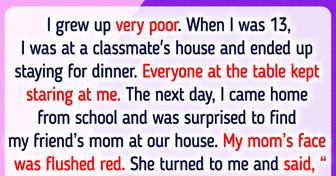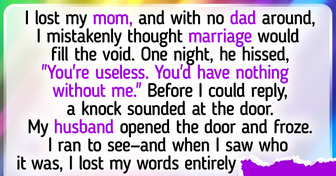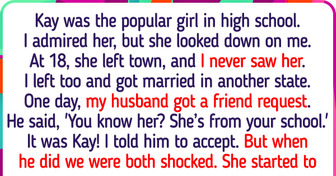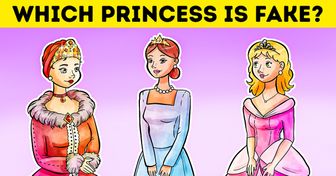My “Dream Man” Approached Me With a Horrible Ultimatum About My 3-Year-Old Daughter, I’m Fuming

When most of us watch a historical movie, we expect to learn something about what life was like at the time. Unfortunately, movies may be doing quite the opposite! Often movies and TV shows over exaggerate what things were like just for the spectacle.
At Bright Side, we find history fascinating, so today we’ve listed 10 historical myths you probably believe because of what you’ve seen on the big screen.
How many films set in the medieval era can you think of where there was an old wise character? Well, in reality, those born in the Middle Ages were only expected to live into their thirties, but this was also not always the case!
The lower life expectancy was because of things like diseases, a high infant mortality rate, the lack of advanced medicine, the plague, and famine. But that doesn’t mean to say that the moment you turn thirty, you died. In fact, if you survived childhood, you could expect to live to a relatively normal age of between 62 and 70 years old.
You’ve probably seen movies set in the Victorian or medieval times where women had their long flowing hair out, but this simply wasn’t the case in reality. In fact, women covered their hair or braided and pinned it up, as showing off long hair was seen as immodest and a sign of temptation and sin.
This was especially the case for married women. Unmarried women and girls could let their hair be slightly looser, but even up until the Victorian era, this was seen as quite scandalous.
Dinosaur discoveries found in China in the 1990s provided evidence that they did in fact have feathers. It is believed that these were originally for display before later adapting the characteristics for flight. Think about how modern-day male birds have bright colorful feathers to attract attention.
The dinosaurs believed to have feathers date back to 180 million years ago, which is much later on in their existence.
We’ve all watched a movie where the leader gives a war speech, but in reality, it didn’t happen in this way. In these scenes containing tens upon thousands of men, how would anyone be able to hear it?
Battle speeches happened to this scale with smaller armies, but for larger ones, generals would speak to their soldiers in blocks or send out messages. But this wouldn’t look as epic on the big screen.
Sometimes in movies, you wonder why knights even bother wearing armor as it’s so often easily penetrated. However, this is not true, plate armor was actually very effective at blocking attacks.
Unlike some movies, wearers could also move around easily. Chain mail was also effective at blocking slicing attacks, but it was less effective against pointed weapons.
Chivalry is something many of us associate with knights, especially when they kiss the hands of a lady. This stems from the idea of courtly love where knights would venture off to perform services in order to appear nobler to ladies. The idea was that the knight would tell of his love but wasn’t meant to act on it. A popular example being, Sir Lancelot and Guinevere from Arthurian legend.
However, the hand kiss didn’t become particularly popular in some countries until the Victorian era. Even then it had a mixed response with some seeing it as playful and others finding it inappropriate.
You have probably seen a movie where medieval common folk were covered in grime. While the era’s hygiene was by no means as good as it is today, Hollywood makes it out to be way worse than it was.
At the time, lice and fleas were a particular concern, so people were encouraged to bathe. Soap and solutions to wash their hair were used. Likewise, people used twigs and wool cloth to clean their teeth. In fact, the idea of dirt-poor peasants may have been used as a tactic by some poorer people as part of the peasant’s tax aversion strategy.
Typically we think of Spartans as wearing loincloths and capes thanks to movies like 300. Well, they may have eventually abandoned their body armor, but that certainly wasn’t the case at first.
Hoplites, meaning “man at arms,” originally wore breastplates or thickened linen body armor as well as greaves for their legs and helmets.
Thanks to Disney’s Pocahontas, we think of the heroine as a fully grown woman. In reality, Pocahontas was a child of between 10 and 12 when she first met the colonists and John Smith. There’s even debate as to whether she was the one to save Smith’s life.
If you’ve seen Braveheart, you know the Scots wore kilts. However, kilts didn’t even come into existence for another 300 years.
Braveheart is unfortunately full of inaccuracies, as the screen Battle of Stirling Bridge is missing an integral part of history, the bridge itself.
Are there any other myths you believe because of movies? Let us know!











